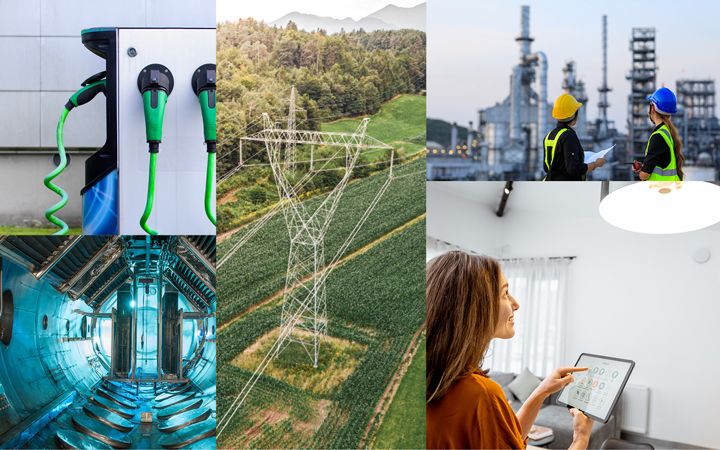
How to manage surging electricity demand
Driven by booming cloud computing, AI, industrial resurgence, and electrification of buildings and transport, the U.S. power grid now faces an unexpected challenge: a sharp rise in electricity demand that could stretch its limits.
ICF’s report reveals an increase in U.S.-wide electricity demand and peak demand from 2023 levels
25%
78%
14%
54%
The latest demand projections are significantly higher than projections made as recently as last year. Utilities and other electric grid stakeholders will be constrained in their ability to meet the demand growth in some regions due to limited capacity to connect new generation to the grid or deliver more electricity to customers.
Our new report maps the regions where demand growth could present the greatest challenges and offers recommendations to help manage the reliability and affordability of electricity amid this challenging new paradigm.
Electricity demand growth hot spots
ICF expects electricity demand growth in every region of the United States but it will not be felt equally across the country. Some regions are expected to face a double whammy of sorts with overall demand growth and peak demand growth exceeding 7.1% and 5.6%, respectively, through 2035.
Electric grid constraints
- Limited transmission system capacity to accommodate more electricity from new sources of generation.
- Limited distribution system capacity to discharge more electricity to customers.
- Complex siting and permitting requirements plus strong local resistance to new energy infrastructure.
Recommendations to manage demand growth and electricity supply constraints
Rapid demand growth combined with grid constraints makes it more challenging to balance the pillars of electricity service: reliability and affordability. However, the challenges are not insurmountable, and smart and effective planning and implementation will be crucial for success.
ICF offers recommendations for key stakeholders to stay one step ahead.
- Utilities: Soaring demand and grid limitations are straining the balance between reliability and affordability in electricity service. But with smart, strategic planning, these challenges can be met.
- State Energy Offices: Partner with experts in comprehensive energy planning and program design to analyze current and future energy supply and demand while considering the context of existing energy policies and emerging energy challenges and opportunities.
- Energy developers and investors: Gain a competitive edge with platforms that map the complex matrix of factors—forecasted wholesale and capacity prices, grid and pipeline availability, permitting hurdles, land use constraints, and more—to uncover the elusive sweet spots for your next project.
- Federal agencies: Use best-in-class integrated planning tools—such as national-scale modeling with regional granularity and dynamic power market simulation—to prepare the U.S. electricity system for higher demand.